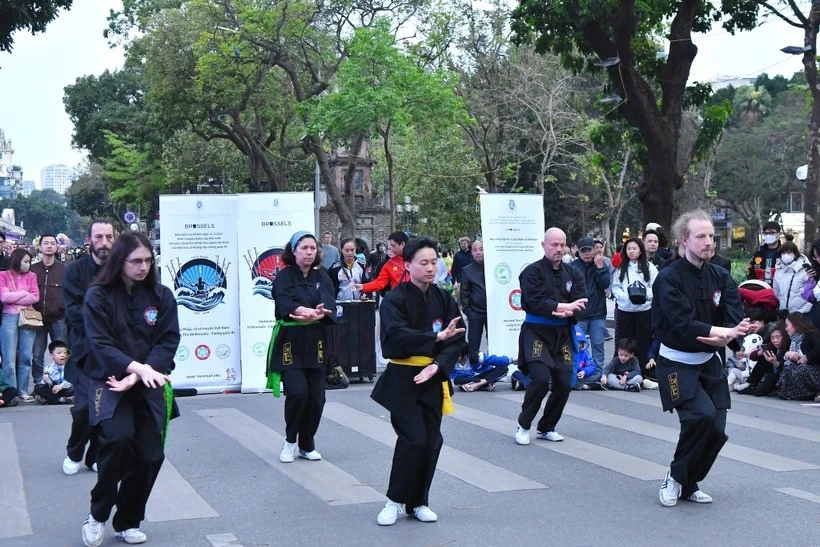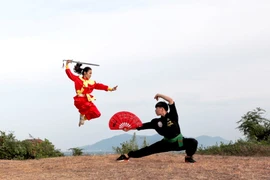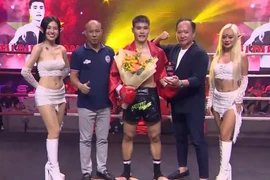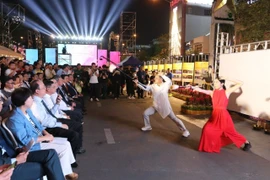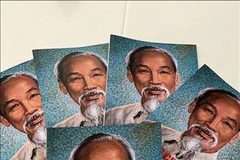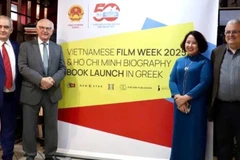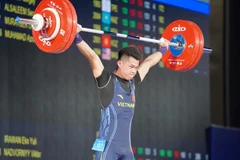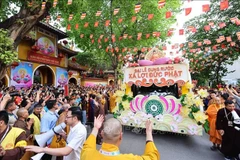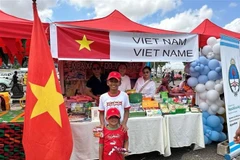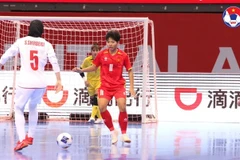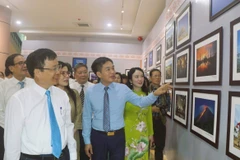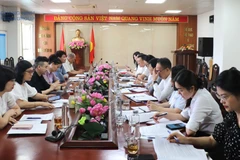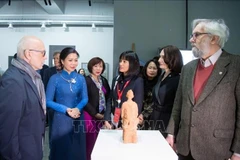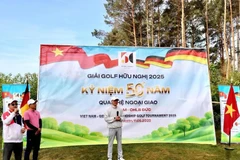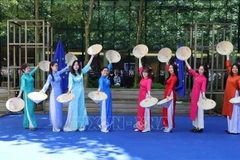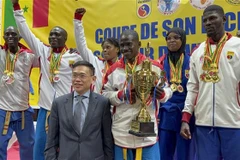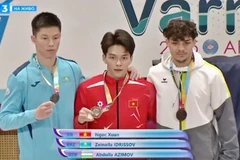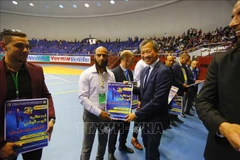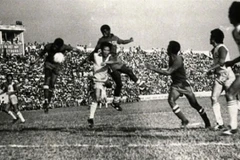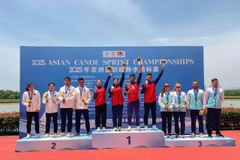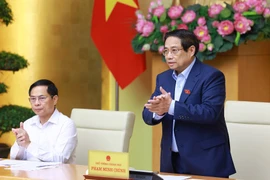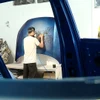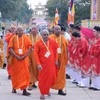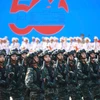Hanoi (VNA) – Thuy Phap, a distinctive water-inspired martial art founded in Belgium by Vietnamese master Huynh Chieu Duong in 2002, is captivating practitioners worldwide, blending physical vitality, mental harmony, and the rich essence of Vietnamese culture.
Set to the rhythms of traditional Vietnamese music, Belgian martial artist Jean-Philippe Crevecoeur and his fellow practitioners recently mesmerised audiences with their fluid, water-like performances at iconic Hanoi locations. Their demonstrations at Hoan Kiem Lake’s walking street and Van Lake within the Temple of Literature, part of cultural activities during the Belgian royal visit, left spectators in awe, showcasing the art’s grace and power.
A Vietnamese legacy born abroad
Originating from Binh Duong province, master Duong overcame a frail physique by mastering traditional Vietnamese martial arts, and distilling their fluid techniques into Thuy Phap. After relocating to Belgium in 2000, he was encouraged by medical professionals to teach the art after they saw its therapeutic potential.
Characterised by gentle, flowing movements reminiscent of water and drifting clouds, Thuy Phap promotes flexibility and wellness, making it especially suitable for elderly practitioners.
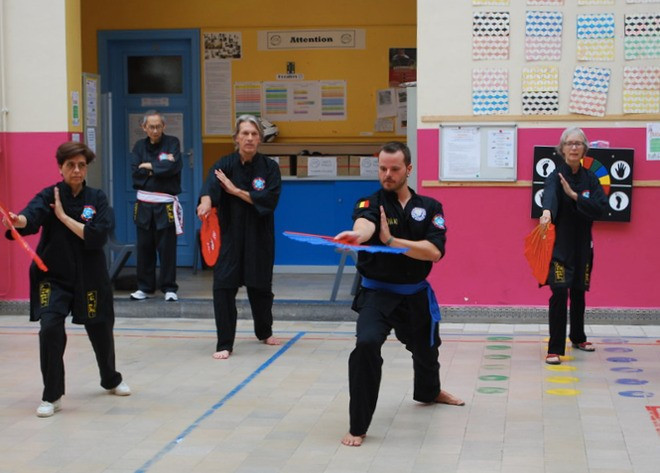
“Thuy Phap prioritises health, self-defence, and harmony”, Duong explained. “Its techniques redirect an opponent’s force to ensure protection without aggression, maintaining control and balance”. Beyond hand-to-hand forms, the art preserves a rich repertoire of traditional Vietnamese weapons, including staff, sword, saber, fan, and stick.
A cultural bridge between nations
Thuy Phap has gained remarkable traction in Belgium, becoming the first Vietnamese martial art integrated into secondary schools and universities in the European nation, alongside global disciplines like judo and taekwondo. This milestone reflects its universal appeal, attracting practitioners of all ages and backgrounds.
Crevecoeur, a 20-year Thuy Phap devotee, said master Duong had named many of his techniques and forms after major Vietnamese historical and cultural references. He highlighted techniques like Linh Quy Kiem, inspired by King Le Loi’s legendary return of a sacred sword to a divine turtle after driving out foreign invaders, and Nguyet Tuong Con, a form teaching humility through the tale of a man futilely grasping at the moon’s reflection. “These lessons resonate universally, urging us to shun greed and embrace wisdom,” he said.
Veronique Guichard, another Belgian practitioner, discovered Thuy Phap after a shoulder injury halted her practice of karatedo and aikido. She praised its blend of strength and fluidity, which allowed her to continue her martial arts journey with ease.
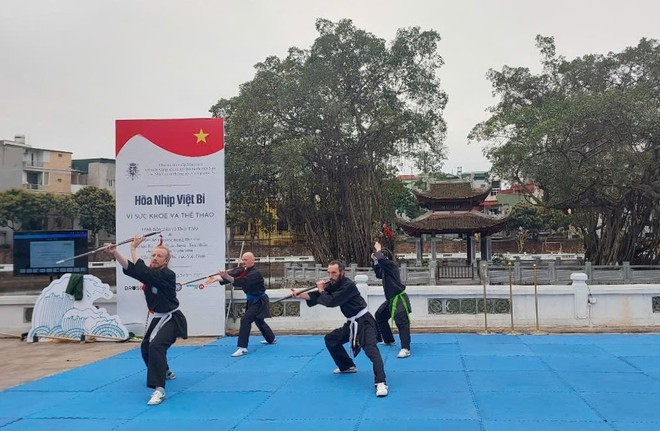
Carrying Thuy Phap home
While Duong has showcased Thuy Phap in Vietnam on several occasions, establishing a formal school remains a challenge due to limited resources and trained instructors.
Nonetheless, Vietnamese practitioner Dang Thi Thu Quyen, based in Belgium, is passionate about its potential. “Thuy Phap embodies the soul of Vietnamese martial arts and serves as a vital cultural bridge,” she said. “Through this art, many Belgians have embraced Vietnamese culture and even learned the language. It is a treasure that deserves greater recognition in its homeland”.
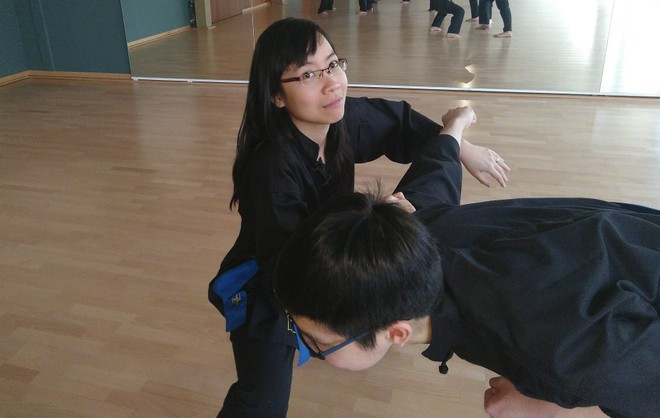
Thuy Phap’s growing global influence underscores Vietnam’s enduring cultural legacy, fostering mutual understanding and pride as it connects communities across borders./.
